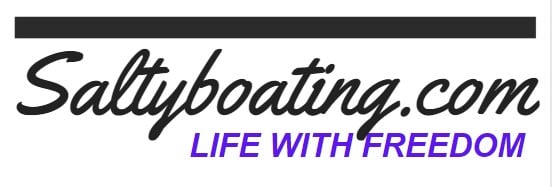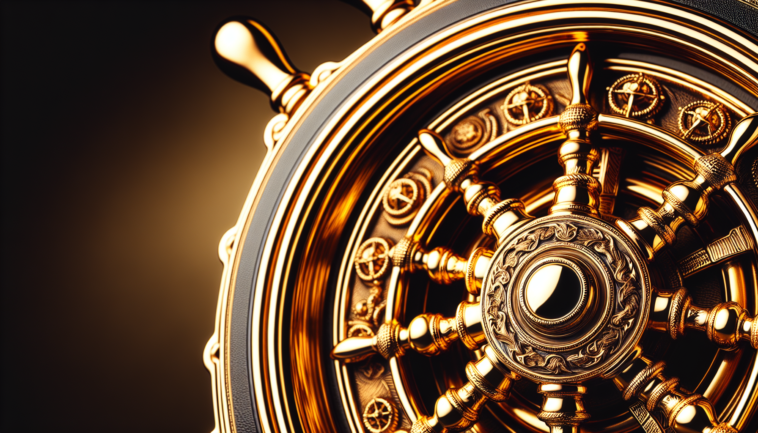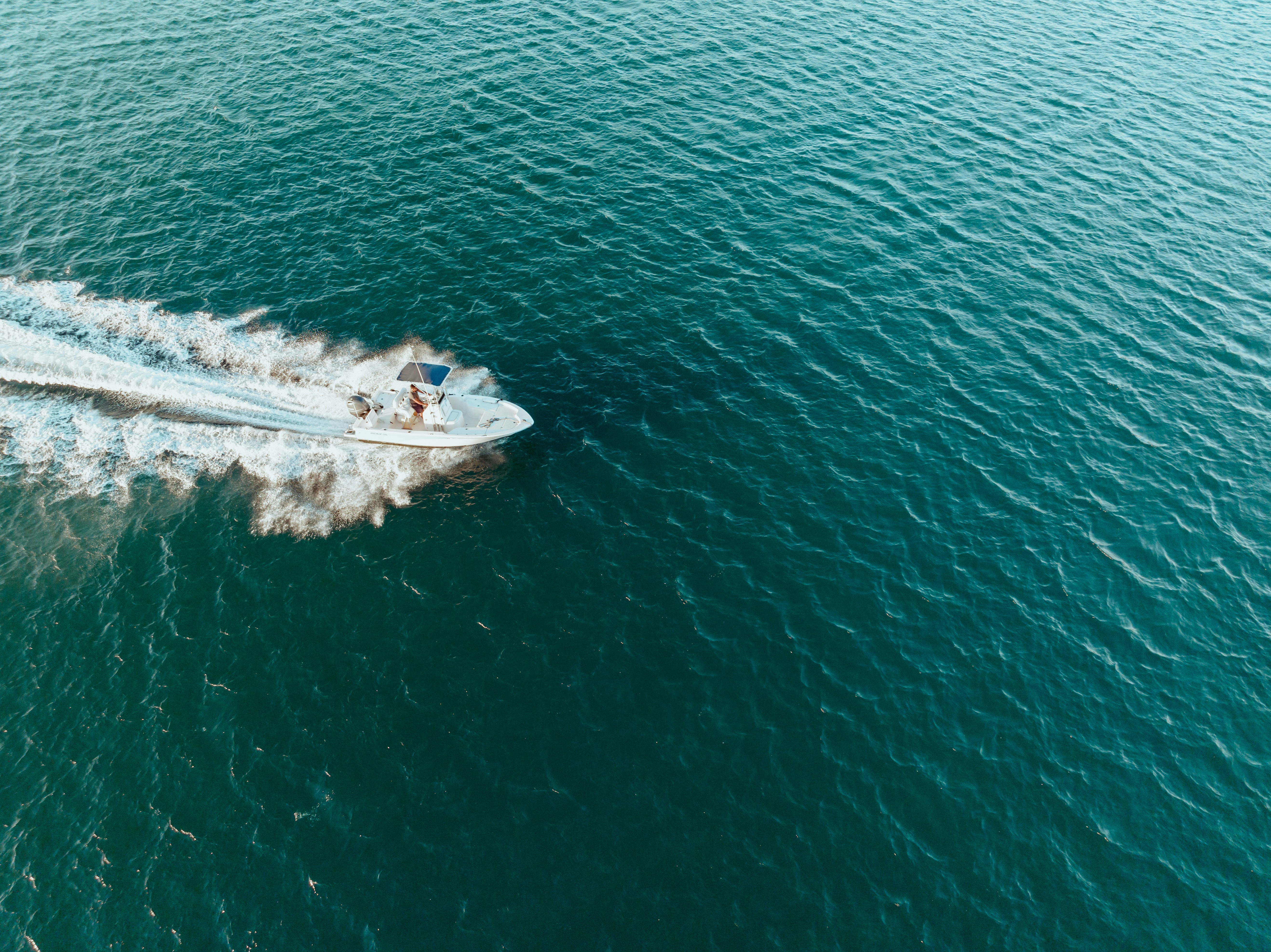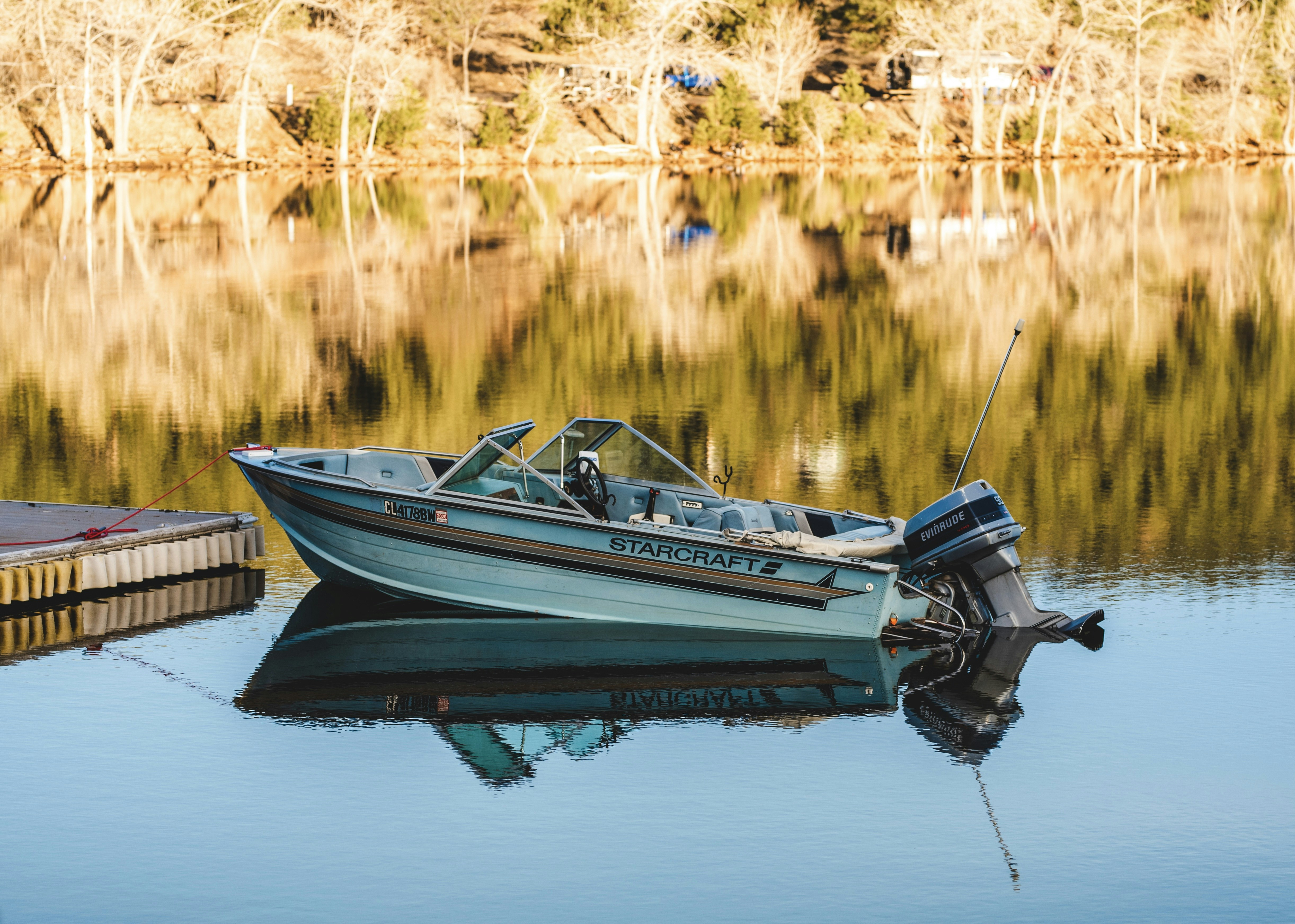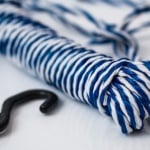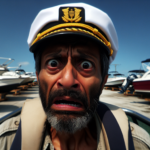If you’re new to the world of boating, you might find yourself surprised by the plethora of terminology that surrounds this beloved activity. From knots and lines to sails and hulls, there’s a whole language of boating terms to navigate. In this article, we’ll dive into a few important boating terms that every aspiring captain should know. So, grab your life jacket and get ready to expand your nautical vocabulary!
Boating Terms
Boating is a popular recreational activity enjoyed by millions of people worldwide. Whether you are a seasoned sailor or a novice boater, it is essential to familiarize yourself with some important boating terms. By understanding these terms, you can navigate the waters safely and confidently. In this article, we will explore a comprehensive list of boating terms that cover various aspects of boating, from different parts of the boat to navigational and safety terms, as well as maneuvering, weather, equipment, boat types, boating activities, boating organizations, and boating etiquette.
Bow
Let’s start with the bow, which is the front part of the boat. When someone refers to the bow, they are talking about the forward section of the vessel. It is important to know this term so that you can communicate effectively with others on board and understand directions or instructions related to the front of the boat.
Stern
Next, we have the stern, which is the rear part of the boat. While the bow refers to the front, the stern refers to the back of the vessel. This term is crucial for understanding directions or maneuvers that involve the rear of the boat.
Port
Moving on, we have the port, which refers to the left side of the boat when facing forward. Remembering the port side is vital for navigation purposes, as it helps differentiate the left from the right when discussing boat positioning or giving directions.
Starboard
On the opposite side of the port, we have the starboard. The starboard side of the boat is the right side when facing forward. Similar to the port side, knowing the starboard side is essential for clear communication while on board.
Hull
The hull refers to the main body or frame of the boat. It is the watertight structure that keeps the vessel afloat. Understanding the hull is crucial for basic boating knowledge, as it forms the basis of the entire boat.
Deck
The deck is the horizontal surface of the boat that covers the hull. It is where you walk or stand while on board. Different boats may have multiple decks, such as the main deck, upper deck, or sun deck, depending on their size and configuration.
Cabin
The cabin is an enclosed area on a boat where people can relax, sleep, or seek shelter. It typically provides protection from the elements and may include amenities such as sleeping quarters, a kitchenette, a bathroom, and other living spaces, depending on the size and type of the boat.
Keel
The keel is a structural element of the boat that runs along the centerline of the hull, from the bow to the stern. It provides stability and helps prevent the boat from tipping over. Understanding the keel is essential for maintaining balance and stability while navigating the waters.
Rudder
The rudder is a movable part located at the stern of the boat. It is used to steer and control the direction of the vessel. By turning the rudder, the boater can change the boat’s course or direction, providing essential maneuverability while on the water.
Mooring
Mooring refers to the act of securing a boat in place using a mooring line or anchor. It is an important skill for boaters, especially when docking or anchoring the boat. Understanding how to properly moor a boat ensures the vessel remains securely in one place, preventing it from drifting away.
Navigation Terms
When it comes to navigating the waters, there are several essential terms to be familiar with. Whether you are sailing on the open sea or cruising along a river, understanding these navigation terms will help you navigate safely and effectively.
Aft
Aft refers to the direction towards the rear or stern of the boat. When someone instructs you to move aft or asks about something located aft, they are referring to the back of the boat.
Fore
On the other hand, fore refers to the direction towards the front or bow of the boat. When someone mentions the fore or asks about something located fore, they are referring to the front of the vessel.
Portside
Portside is the left side of the boat when facing forward. It is important to distinguish portside from starboard when giving or receiving directions, as it ensures clear communication on board.
Starboard Side
Starboard side, as we mentioned earlier, is the right side of the boat when facing forward. It is crucial to differentiate starboard from portside for effective navigation and communication on the water.
Trim
Trim refers to the adjustment of the boat’s balance or angle in the water. Proper trim ensures the boat maintains stability and optimal performance. It involves adjusting the distribution of weight, such as passengers or cargo, to achieve the desired balance and ride.
Chart
A chart is a nautical map used for navigation. It provides information about water depth, landmarks, navigation aids, and potential hazards. Understanding how to read and interpret charts is essential for safe boating.
Compass
A compass is a navigational instrument that indicates the boat’s direction relative to the Earth’s magnetic North. It is an essential tool for navigation, allowing boaters to maintain a consistent heading and navigate accurately.
Bearing
Bearing refers to the direction of one object or location relative to another. It is typically measured in degrees clockwise from North. By determining bearings, boaters can navigate precise routes and avoid obstacles or hazards.
Course
Course refers to the intended direction a boat will travel. It is typically expressed in degrees and is based on factors such as wind, currents, and navigational aids. Setting and maintaining a proper course is essential for reaching a desired destination safely.
Tide
Tides are the rising and falling of ocean or sea levels caused by gravitational forces exerted by the Moon and the Sun. Understanding tides is crucial for boaters, as they can affect water depths, currents, and safe navigation. Monitoring tide levels helps plan boating activities around optimal conditions.
Safety Terms
Boating safety should always be a top priority. Understanding and following safety protocols and knowing the necessary safety terms can make a significant difference in keeping yourself and others safe while out on the water.
Lifejacket
A lifejacket, also known as a personal flotation device (PFD), is a life-saving device designed to keep a person afloat in the water. Wearing a properly fitted and U.S. Coast Guard-approved lifejacket is essential for boaters of all ages, especially when engaged in water activities.
Flotation Device
A flotation device refers to any device that provides buoyancy and helps keep a person afloat in the water. It includes lifejackets, life rafts, and other floatation aids. Having a flotation device on board and knowing how to use it is crucial for boating safety.
Bailer
A bailer is a device used to remove water from the bilge or hull of a boat. It can be a manual hand-operated pump or a scoop-like container. Keeping a bailer on board helps boaters quickly remove water in case of leaks or heavy rain, preventing the boat from becoming unstable or sinking.
Fire Extinguisher
A fire extinguisher is a crucial safety device on any boat. It is used to extinguish small fires before they spread and cause significant damage. Boaters should have a U.S. Coast Guard-approved fire extinguisher on board and know how to use it in case of a fire emergency.
EPIRB
EPIRB stands for Emergency Position Indicating Radio Beacon. It is a distress beacon that transmits a signal to alert rescue authorities in case of an emergency. Boaters should have an EPIRB on board, especially when venturing into remote or offshore waters, as it can help facilitate a prompt search and rescue operation.
Gunwale
The gunwale refers to the upper edge or side of a boat’s hull. It provides structural support and acts as a barrier to prevent water from entering the boat. Understanding the gunwale is crucial for boarding the boat safely and maintaining balance while on board.
Anchor
An anchor is a heavy object attached to a chain or rope used to keep a boat in place. It is dropped into the water, and the chain or rope connects it to the boat. Anchoring provides stability and prevents the boat from drifting in changing currents or wind conditions.
Buoy
A buoy is a floating object used for navigation or as a marker for hazards, channels, or mooring locations. Different types of buoys have specific colors, shapes, and markings to convey information to boaters. Understanding buoy symbols and their meanings is essential for safe navigation.
Whistle
A whistle is a sound-producing device used to signal intentions or alert others of danger. It is an important safety item to have on board, especially in situations where verbal communication may be difficult. A whistle’s distinct sound can help attract attention and alert others to your presence.
VHF Radio
A VHF (Very High Frequency) radio is a communication device used by boaters to communicate with other vessels, marinas, and emergency services. It provides a reliable means of communication while on the water and is essential for safety and navigation.
Maneuvering Terms
Skillful maneuvering is crucial for safe and effective boat handling. Familiarizing yourself with these important maneuvering terms will help you navigate tricky situations and ensure smooth sailing.
Docking
Docking refers to the process of bringing a boat to a dock or pier. It involves approaching the dock, maneuvering the boat into a designated space, and securing the vessel safely. Docking requires precise control and spatial awareness to avoid collisions or damage to the boat.
Anchoring
Anchoring is the process of dropping an anchor to secure a boat in place. When anchoring, it is essential to choose an appropriate location, deploy the anchor correctly, and ensure it is securely set. Proper anchoring prevents the boat from drifting or being pushed by wind or currents.
Berthing
Berthing is similar to docking but typically refers to bringing a boat or ship into a berth at a marina or port. It involves navigating tight spaces, following marina rules and guidelines, and safely positioning the boat alongside the dock.
Knot
A knot is a unit of speed measurement in the nautical world. One knot is equal to one nautical mile per hour. Knowing how to calculate and understand speed in knots is essential for measuring boat performance and complying with speed limits.
Tacking
Tacking is a sailing maneuver used to change the direction of a sailboat when sailing against the wind. It involves steering the boat into the wind and changing the angle of the sails to take advantage of wind power and make progress in the desired direction.
Jibing
Jibing is another sailing maneuver used to change the direction of a sailboat with the wind coming from behind. It involves turning the stern of the boat through the wind, changing the position of the sails, and completing the maneuver safely.
Man Overboard
Man overboard (MOB) refers to a situation where a person falls or is thrown overboard from a boat. It is crucial to react quickly and effectively to MOB situations, including throwing a floatation device, signaling for help, and executing a rescue plan to retrieve the person from the water.
Propeller
The propeller is the rotating blade-like device attached to the boat’s engine or motor. It generates thrust and propels the boat through the water. Understanding the propeller’s function and being aware of its position is essential for safe maneuvering and avoiding accidents.
Throttle
The throttle is a control lever or mechanism that regulates the speed or power output of the boat’s engine or motor. Proper throttle control allows the boater to adjust speed, maneuver the boat, and maintain safe operation under different conditions.
Wake
A wake refers to the disturbed water left behind a boat as it moves through the water. Boaters must be aware of their wake and the potential impact it may have on other vessels or shoreline areas. Operating at a safe speed and maintaining a responsible wake is essential for boating etiquette and safety.
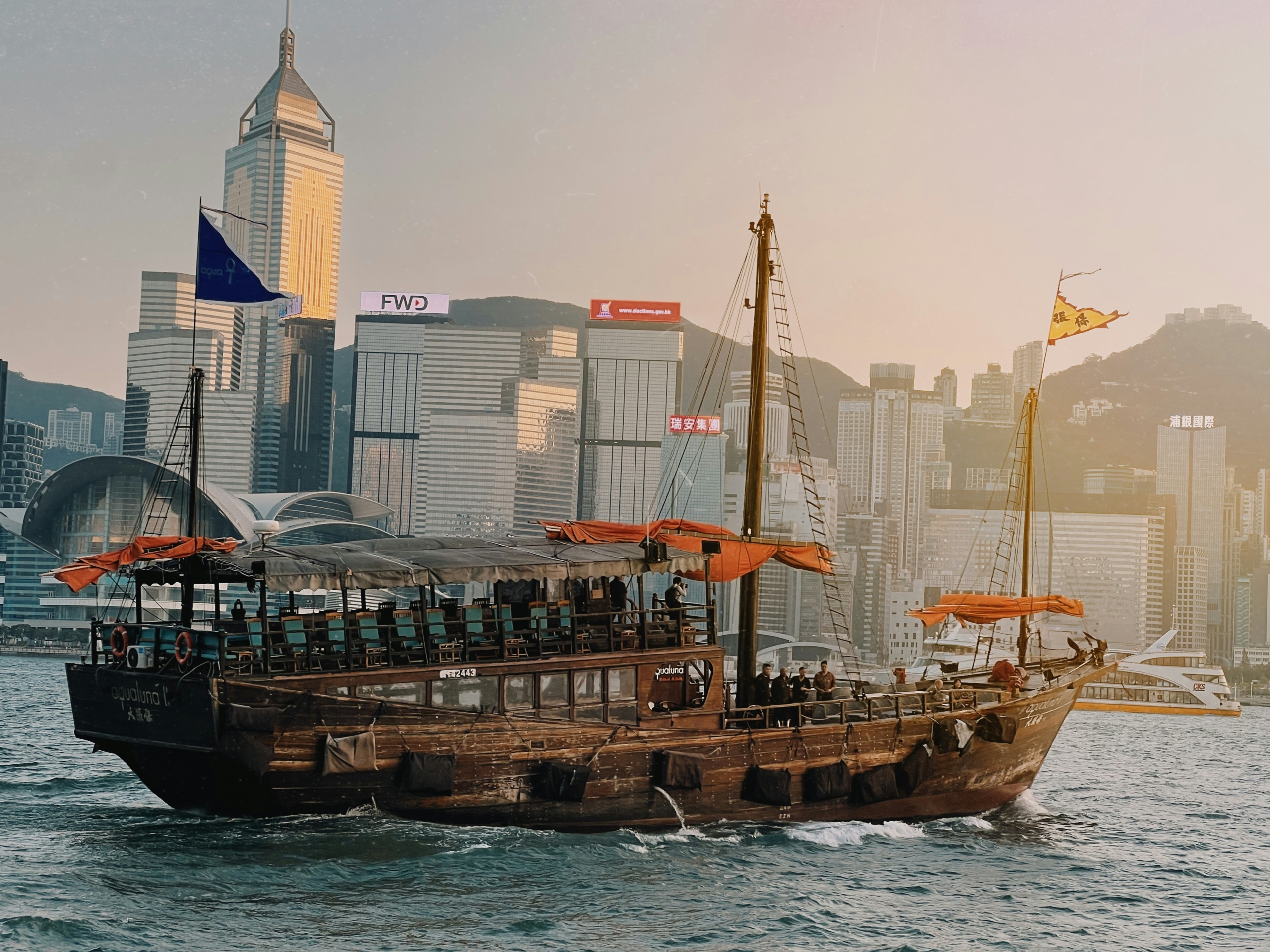
Weather Terms
Weather conditions can significantly impact boating experiences and safety. Here are some important weather terms to help you understand and prepare for different weather situations while out on the water.
Windward
Windward refers to the direction from which the wind is blowing. When you are on the windward side of a boat or location, you are facing into the wind. Understanding the windward direction helps anticipate wind conditions and adjust boat handling accordingly.
Leeward
On the opposite side of windward, we have leeward. Leeward refers to the side or direction away from which the wind is blowing. When you are on the leeward side of a boat or location, you are sheltered from the wind. Knowing the leeward direction is important for identifying areas of relative calm and adjusting sail trim or boat handling accordingly.
Gust
A gust is a sudden, localized increase in wind speed. Gusty conditions can be unpredictable and affect a boat’s stability and handling. Being aware of gusts and how they may impact the boat allows boaters to make necessary adjustments to maintain control and safety.
Swell
Swell refers to long, rolling waves that are typically generated by distant storms or strong winds. Unlike wind-driven waves, swells maintain their shape and can travel long distances. Understanding swell conditions is important, as they can affect boat stability and comfort, especially when crossing open water or exposed areas.
Chop
Chop refers to shorter, steep waves that are caused by local wind conditions. These waves are typically closer together and can create a rougher ride for boaters. Being aware of choppy conditions helps boaters anticipate the impact on their vessel and adjust speed and direction accordingly.
Whitecaps
Whitecaps are white-capped waves that form when wind blows across the surface of the water, creating small crests or peaks. They are a visual indicator of strong winds and rough conditions. Avoiding areas with excessive whitecaps ensures a safer and more comfortable boating experience.
Fog
Fog is a weather condition characterized by low-lying clouds that reduce visibility. Fog can be especially dangerous for boaters, as it can impair visibility of other vessels, landmarks, or navigational aids. Boaters should be equipped with proper navigation instruments, such as radar or GPS, and use caution or consider postponing their trip in foggy conditions.
Rain Squall
A rain squall is a sudden and intense burst of rain accompanied by strong winds. Squalls can be short-lived but may catch boaters off guard and create hazardous conditions. Having a weather forecast and monitoring the sky for signs of rain squalls helps boaters plan their outings and seek shelter if necessary.
Thunderstorm
A thunderstorm is a weather condition characterized by thunder, lightning, and heavy precipitation. Thunderstorms can be dangerous for boaters due to the risk of lightning strikes, high winds, and potential flash floods. It is essential to closely monitor weather forecasts and seek shelter well in advance of approaching thunderstorms.
Hail
Hail is a form of solid precipitation consisting of balls or irregular lumps of ice. Hail can occur during thunderstorms and is known to cause damage or injury. Boaters caught in a hailstorm should seek shelter and protect themselves and their boat from the potential impact of hailstones.
Equipment Terms
Having the right equipment on board is essential for a safe and enjoyable boating experience. Understanding the various equipment terms helps boaters make informed decisions when outfitting their boats.
Bimini
A bimini is a type of boat top or canopy that provides shade and protection from the sun and rain. It is typically made of fabric or other materials and is installed over the cockpit or open areas of the boat. Having a bimini on board enhances comfort and helps protect against sunburn and heat exhaustion.
Stern Drive
A stern drive, also known as an inboard/outboard (I/O) drive, is a propulsion system used in boats. It combines elements of outboard and inboard engines, with the engine located inside the boat and the drive unit extending outside the hull. Stern drives provide good performance and maneuverability and are commonly used in recreational boats.
Outboard Motor
An outboard motor is a self-contained propulsion system that consists of an engine, propeller, and controls. It is mounted on the transom of the boat and provides propulsion and steering. Outboard motors are versatile, easy to maintain, and widely used in various small to medium-sized boats.
Sail
A sail is a large piece of fabric or material attached to a sailboat’s mast and boom. It captures wind power and propels the boat through the water. Sailing requires skillful manipulation of sails, understanding wind direction and strength, and optimizing sail trim for optimal performance.
Paddle
A paddle is a manual, hand-held device used to propel a canoe, kayak, or other small watercraft. It consists of a long shaft with a blade at one or both ends. Paddling is a popular activity for exploring calm waters, maneuvering through tight spaces, and enjoying the tranquility of nature.
Bilge Pump
A bilge pump is a device used to remove water from the bilge, the lowest part of a boat’s hull. It prevents the accumulation of water and helps maintain buoyancy and stability. Bilge pumps can be manual or automatic and should be regularly checked and maintained to ensure proper functioning.
Navigation Lights
Navigation lights, also known as running lights, are lights installed on a boat to signal its position, direction, and status to other vessels at night or in reduced visibility conditions. Different colored lights and configurations indicate the boat’s size, type, and navigation status, helping prevent collisions and ensuring safe navigation.
Depth Sounder
A depth sounder, also referred to as a depth finder or sounder, is an electronic device used to measure water depth beneath a boat. It uses sonar technology to send sound waves to the water’s surface and measure the time it takes for the waves to bounce back. Depth sounders provide valuable information for safe navigation, especially in shallow or unfamiliar waters.
Fishfinder
A fishfinder is an electronic device used by anglers to locate and track fish underwater. It uses sonar technology to detect and display fish, submerged objects, and the seabed structure. Fishfinders help fishermen identify schools of fish, select fishing spots, and improve their chances of a successful catch.
Marine Radio
A marine radio, also known as a VHF marine radio, is a communication device specifically designed for boating and maritime operations. It enables boaters to communicate with other vessels, authorities, marinas, or the Coast Guard. Marine radios provide a reliable means of communication while on the water and are crucial for safety and emergency situations.
Boat Types
Boating enthusiasts can choose from a wide variety of boat types, each with its unique features and capabilities. Understanding different boat types helps match the vessel to specific activities and boating preferences.
Sailboat
A sailboat, as the name suggests, is a boat propelled primarily by sails. It relies on wind power to move through the water and typically has a keel or centerboard for stability. Sailboats come in various sizes and configurations, from small dinghies to large yachts, catering to different sailing preferences and skill levels.
Motorboat
A motorboat is a boat powered by an internal combustion engine, typically with an outboard motor or stern drive. Motorboats offer speed, maneuverability, and versatility, making them popular for recreational boating, fishing, and watersports.
Yacht
A yacht is a luxurious and often large recreational boat used for cruising or leisure activities. Yachts typically feature amenities such as cabins, living spaces, kitchens, and entertainment areas. They are designed for comfort and enjoyment while cruising the open sea or exploring coastal waters.
Cruise Ship
Cruise ships are large passenger vessels designed for long-distance travel and leisure activities. They offer a wide range of amenities and services, including multiple decks, restaurants, entertainment venues, pools, and cabins. Cruise ships provide all-inclusive vacations and cater to a variety of interests and preferences.
Kayak
A kayak is a small, narrow boat designed for one or two people. It is propelled using a double-bladed paddle and is known for its maneuverability and versatility. Kayaks are popular for recreational paddling, fishing, and exploring calm waterways such as rivers, lakes, and coastal areas.
Canoe
Similar to a kayak, a canoe is an open-top boat designed for one or more people. Canoes are typically propelled using a single-bladed paddle, and they offer stability and versatility. Canoes are popular for recreational paddling, fishing, and social outings.
Pontoon Boat
A pontoon boat is a flat-bottomed boat with a deck supported by two or more pontoons. Pontoons are hollow tubes that provide buoyancy and stability. Pontoon boats are known for their spaciousness, stability, and comfort, making them popular for leisurely cruises and social gatherings.
Jet Ski
A jet ski, also known as a personal watercraft (PWC), is a small, motorized watercraft designed for one to three people. Jet skis are propelled by a water jet, allowing for high speeds and maneuverability. They are popular for watersports, such as water skiing, wakeboarding, and racing.
Fishing Boat
A fishing boat is a specialized vessel designed for fishing activities. Fishing boats come in various sizes and configurations, from small dinghies to large trawlers. They are equipped with features such as fishing rod holders, livewells, and other fishing-specific equipment to enhance the angler’s experience.
Speedboat
As the name implies, a speedboat is designed for speed and performance. It typically features a sleek hull and a powerful engine, allowing for high speeds and thrilling rides. Speedboats are popular for watersports, racing, and recreational boating.
Boating Activities
Boating offers a wide range of exciting and enjoyable activities for boaters of all ages and interests. Whether you are seeking adventure, relaxation, or social interaction, there is an activity to suit your preferences.
Cruising
Cruising is a popular boating activity that involves exploring waterways, coastlines, or even distant destinations. It allows boaters to enjoy the scenic beauty, discover new places, and experience the freedom and relaxation that boating offers.
Fishing
Fishing is a favorite pastime for many boaters. Whether you prefer freshwater or saltwater fishing, boating provides access to a wide range of fishing spots and opportunities to catch various fish species.
Water Sports
Boating and water sports go hand in hand, offering endless possibilities for fun and excitement. Watersports such as water skiing, wakeboarding, tubing, and kneeboarding provide thrills and adrenaline rushes for both participants and spectators.
Sailing
Sailing combines the beauty of nature with the thrill of harnessing the wind. Sailing enthusiasts enjoy the challenge of navigating solely with the power of the wind, adjusting sails, and experiencing the tranquility of gliding through calm waters.
Paddling
Paddling activities, such as kayaking and canoeing, provide a unique and personal connection to the water. Paddlers can explore secluded coves, navigate winding rivers, or venture through serene lakes, all while enjoying the peaceful rhythm of their paddle strokes.
Scuba Diving
For those who want to explore the underwater world, boating offers opportunities for scuba diving. Divers use boats to reach dive sites, bringing them closer to vibrant coral reefs, fascinating marine life, and underwater wonders.
Boat Racing
Boat racing is a thrilling and competitive sport enjoyed by enthusiasts worldwide. Whether it’s powerboat racing, sailboat racing, or jet ski racing, these events showcase the skill, speed, and excitement that come with navigating the water at high velocities.
Boat Shows
Boat shows are events where boat manufacturers, dealers, and enthusiasts come together to showcase the latest boat models, accessories, and technologies. Boat shows provide an opportunity to explore different boat types, gather information, and engage with other boating enthusiasts.
Boat Parades
Boat parades are festive events where boats are elaborately decorated with lights, ornaments, and other decorations, often to celebrate special occasions or holidays. These parades take place on waterways, creating a dazzling spectacle and spreading joy and holiday cheer.
Boat Tours
Boat tours offer a unique way to experience and learn about a specific area or attraction. Whether it’s a guided wildlife tour, a historical sightseeing tour, or a sunset cruise, boat tours provide a memorable and immersive experience.
Boating Organizations
Boating organizations play a vital role in promoting boating safety, education, advocacy, and community engagement. These organizations provide resources, training, and support to boaters and work towards the sustainable growth and enjoyment of boating.
US Coast Guard
The United States Coast Guard (USCG) is a military service and a branch of the United States Armed Forces responsible for maritime safety, security, and law enforcement. The USCG plays a significant role in boating safety, including search and rescue operations, boating regulations enforcement, and navigation aid maintenance.
BoatUS
BoatUS is a membership-based organization dedicated to protecting and promoting the interests of recreational boaters. BoatUS offers services such as on-water towing, boat insurance, and boat financing, in addition to providing resources, boating tips, and advocacy for boater rights and safety.
National Safe Boating Council
The National Safe Boating Council (NSBC) is a non-profit organization focused on promoting boating safety education and awareness. The NSBC partners with boating organizations, agencies, and individuals to develop and implement safe boating campaigns, training programs, and resources.
American Sailing Association
The American Sailing Association (ASA) is an organization dedicated to promoting and teaching the art of sailing. ASA offers a comprehensive sailing curriculum, certification programs, and resources to educate and certify sailors of all skill levels.
American Canoe Association
The American Canoe Association (ACA) is a national organization committed to the safe and responsible use of canoes, kayaks, and other paddlecraft. The ACA provides paddling education, certifications, and stewardship programs to promote paddling safety, environmental protection, and recreational enjoyment.
United States Power Squadrons
United States Power Squadrons (USPS) is a non-profit organization focused on boater education and promoting safe boating practices. USPS offers boating courses, certifications, and resources to boaters of all levels, with a particular focus on powerboat handling and navigation.
Marine Retailers Association of the Americas
The Marine Retailers Association of the Americas (MRAA) is an organization that represents the interests of marine retailers, boat dealers, and industry suppliers. MRAA provides resources, education, and advocacy to its members, promoting the success and growth of the boating industry.
National Marine Manufacturers Association
The National Marine Manufacturers Association (NMMA) is a trade association representing the recreational boating industry. NMMA advocates for the boating industry, promotes boating safety, and organizes trade shows, events, and educational programs for industry professionals and boating enthusiasts.
International Yacht Training
International Yacht Training (IYT) is a globally recognized maritime training organization specializing in yachting and maritime education. IYT offers a wide range of training and certification programs for professional and recreational sailors, catering to various skill levels and boating pursuits.
Boating Industry Associations
Various regional, state, and local boating industry associations contribute to boating education, growth, and advocacy on a smaller scale. These associations work within their respective communities, fostering boating opportunities, safety initiatives, and industry promotion.
Boating Etiquette
Just like any community or social environment, boating has its own set of etiquette guidelines to ensure a pleasant and safe experience for all boaters. Understanding and practicing proper boating etiquette demonstrates respect for others and the marine environment.
Right of Way
Understanding right of way rules is crucial for avoiding collisions and ensuring safe passage. Boat operators should familiarize themselves with the rules of their specific waterways or international navigational rules, which dictate who has the right of way in various situations.
No Wake Zone
A no wake zone is an area where boaters must operate at a idle speed, producing no wake or minimal wake when passing through. No wake zones are typically designated in marinas, close to shorelines, or in areas with heavy boat traffic to minimize the impact of boat wakes on other boaters, wildlife, or shoreline structures.
Slow Speed Zone
Similar to no wake zones, slow speed zones require boaters to operate at a slow, controlled speed. These zones are typically designated in areas where speed restrictions are warranted, such as in narrow channels, near swimming areas, or wildlife habitats.
Mooring Etiquette
When mooring, it is important to be aware of other boaters and their mooring lines. Boaters should give adequate space for other vessels, maintain a safe distance to avoid collisions, and use proper docking techniques to prevent damage to their own boat or other moored boats.
Fuel Dock Etiquette
At fuel docks, it is essential to consider other boaters waiting to fuel up. Boaters should approach the fuel dock with care, follow any instructions provided by the fuel attendant, and promptly move away once fueling is complete to allow other boaters to access the dock.
Marina Etiquette
Marinas are shared spaces that require respect and consideration from all boaters. When in a marina, boaters should adhere to posted speed limits, maintain quiet hours, dispose of waste properly, and follow any specific marina rules or guidelines to ensure a harmonious community and enjoyable boating experience for all.
Respecting Wildlife
Boaters should be mindful of their impact on wildlife and natural ecosystems. Avoid approaching or disturbing marine animals, nesting areas, or protected environments. Keeping a safe distance and observing wildlife from a respectful distance helps preserve their natural behaviors and habitats.
Avoiding Pollution
Preventing pollution is a shared responsibility among boaters. It is important to properly dispose of trash, recyclables, and fishing lines, and to prevent fuel, oil, and chemical leaks or spills. Boaters should also respect and follow local regulations regarding holding tank discharge to minimize pollution and protect water quality.
Docking Courtesy
Good docking courtesy involves being patient, calm, and communicative while maneuvering in a docking area. Following proper docking procedures, such as approaching docks slowly, using appropriate lines and fenders, and waiting for assistance when needed, ensures a smooth docking experience for all.
Boat Ramp Etiquette
Boat ramps can be busy and congested areas, especially during peak boating seasons. Boaters should be considerate of others waiting to launch or retrieve their boats, efficiently launch or retrieve their vessels, and promptly move away from the ramp to allow others to access it.
By familiarizing yourself with these important boating terms, you will enhance your boating knowledge and confidence. Understanding the different parts of the boat, navigational terms, safety terminology, maneuvering skills, weather conditions, equipment, boat types, boating activities, organizations, and boating etiquette will allow you to navigate the waters safely and responsibly. Whether you are a recreational boater, a fishing enthusiast, or a sailing devotee, having a solid foundation of boating terms is essential for a fun and successful boating experience. So grab your lifejacket, hop aboard your favorite boat, and enjoy the wonders of the water with the assurance that you are equipped with the knowledge to navigate the boating world. Happy boating!
